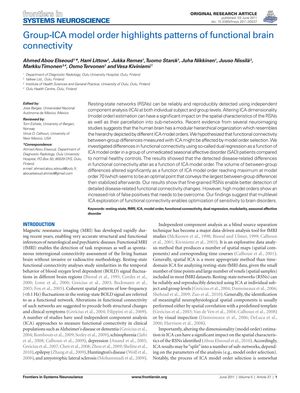Group-ICA Model Order Highlights Patterns of Functional Brain Connectivity
January 2011
in “
Frontiers in Systems Neuroscience
”

TLDR Choosing the right model order in brain connectivity analysis can affect the detection of differences between healthy individuals and those with seasonal affective disorder.
The study from 2011 examined the effect of model order in independent component analysis (ICA) on detecting functional connectivity differences in the brain using fMRI data. The researchers compared 45 unmedicated seasonal affective disorder (SAD) patients to 45 healthy controls and found that the volume of detected between-group differences in functional connectivity varied with ICA model order, peaking at a model order of 70. This suggested that a model order of 70 might be optimal for detecting the largest differences in functional connectivity. The study also showed that while finer-grained resting-state networks (RSNs) could detect more detailed disease-related changes, higher model orders increased the risk of false positives. The results highlighted the importance of model order selection in ICA for accurately identifying functional connectivity differences in the brain, with implications for optimizing sensitivity to brain disorders in research.